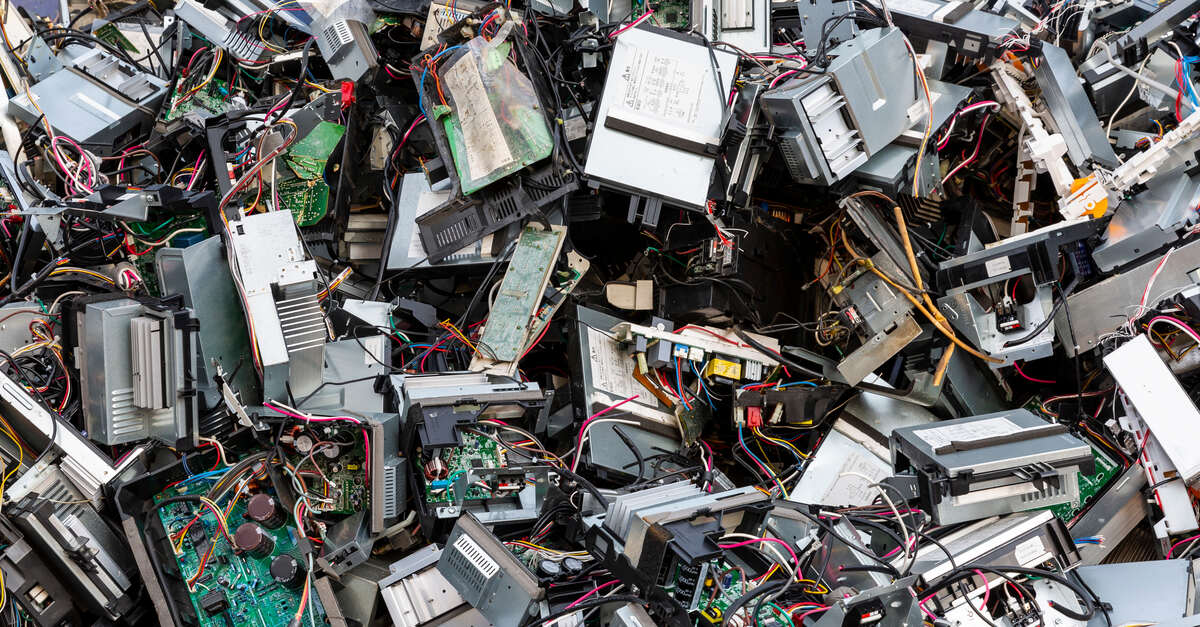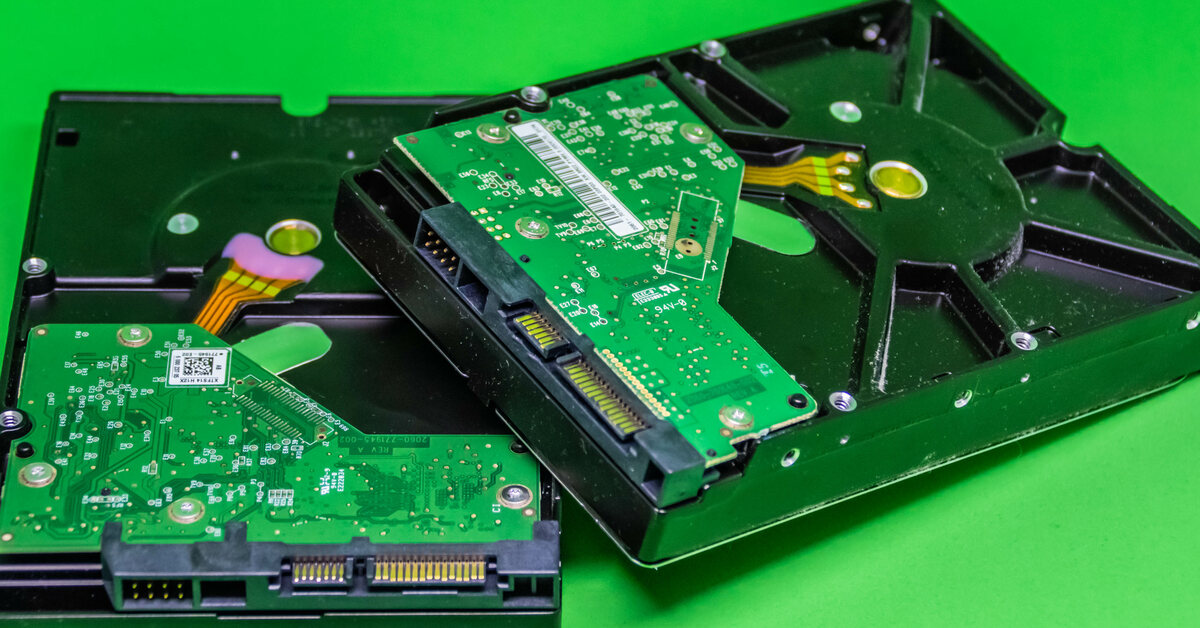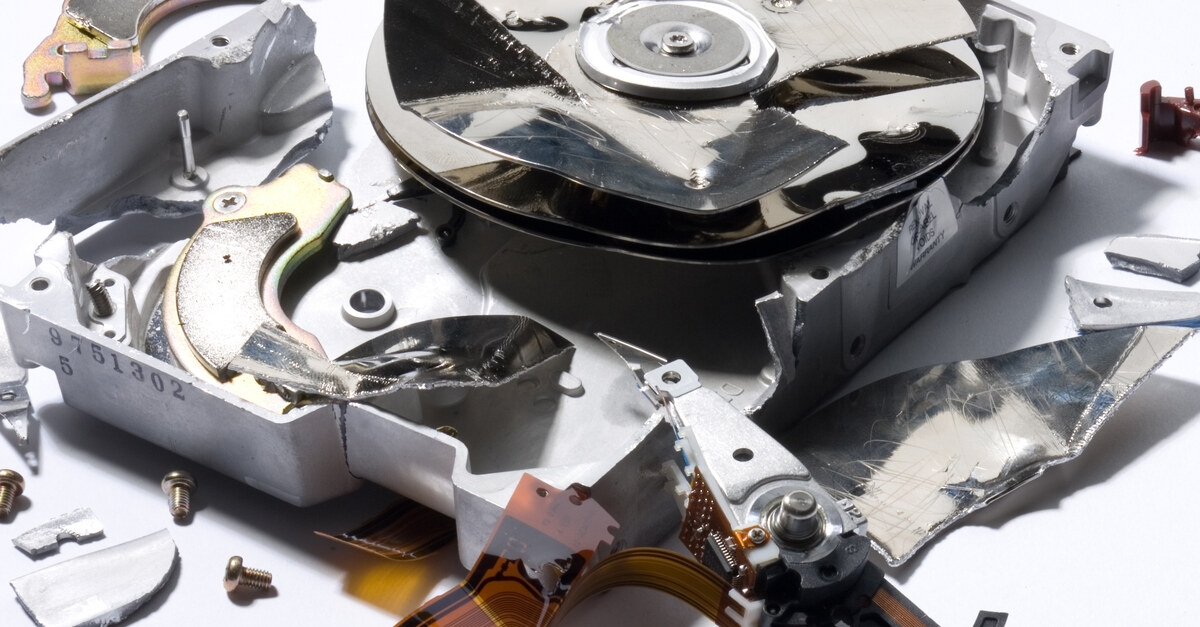
If you’ve recently replaced outdated laptops in your business with shiny, new ones, you may be wondering what to do with the old devices. If your answer is storing them in a closet or tossing them in the dumpster, you might be asking for trouble. The data on those devices could still be accessed, putting your company’s sensitive information in jeopardy.
This is where device shredding comes in. By adhering to this crucial practice, businesses can ensure robust security, compliance, and sustainability. Here are the most important things to know about device shredding for your business.

What Is Device Shredding?
Device shredding is the process of destroying old or obsolete electronic devices to ensure that the data stored on them is irretrievable. It involves physically shredding a device into tiny fragments using specialized equipment. This method typically renders not only the device but also all its internal data inaccessible.
Businesses often rely on certified device shredding services to securely dispose of equipment that’s no longer in use. These services typically adhere to strict security and sustainability guidelines.
Why Is Device Shredding Important?
Device shredding offers significant benefits for businesses. Here’s why you should invest in this key process.
1. Data Security
When businesses fail to dispose of old devices securely, they leave themselves vulnerable to data breaches. Hackers can access sensitive information such as customer data, employee records, financial details, or intellectual property.
Shredding ensures that the data stored on these devices can never be retrieved, eliminating the potential for breaches. A secure shredding process gives you and your clients peace of mind.
2. Compliance
Stringent data protection regulations, such as HIPAA in the US and the GDPR in Europe, govern most industries. Failing to dispose of devices that contain sensitive data can result in hefty fines and reputational damage. Device shredding helps businesses stay compliant with legal and industry-specific guidelines, demonstrating a proactive approach to maintaining data security.
3. Environmental Responsibility
Another important reason to shred old electronics is to mitigate their environmental impact. Many certified shredding services recycle device components responsibly.
Valuable materials such as metals can be recovered while toxic elements are properly disposed of, reducing the strain on landfills and preventing hazardous waste from harming the ecosystem. By choosing device shredding, businesses can align with sustainability goals while setting an example of environmental stewardship.
4. Cost Savings
Investing in device shredding services may seem like an additional expense, but it can actually save businesses money in the long run. Data breaches and noncompliance penalties can be costly, not to mention the reputational damage that can lead to loss of customers and revenue. Device shredding eliminates these risks and potential expenses, making it easier for companies to operate at or under budget.
What Devices Should Be Shredded?
It’s easy to assume shredding only applies to hard drives or desktops, but in reality, modern businesses rely on a wide range of electronic devices. Here’s a list of items that should be sent for shredding when they become obsolete or nonfunctional.
Hard Drives
These storage devices often contain sensitive data, including customer information, financial records, and proprietary business files. Shredding them ensures that the data cannot be retrieved or misused.
Desktop and Laptop Computers
Computers store a significant amount of personal and corporate data. Even deleting files is not enough to guarantee data is completely erased, making shredding the safest option.
Smartphones and Tablets
Mobile devices are frequently used in modern business operations and can store emails, customer contacts, and confidential documents. Shredding prevents potential data breaches.
Servers and Network Equipment
These devices are integral to business networks and data storage. Shredding ensures that sensitive business operations and infrastructure details are not exposed.
Flash Drives and Memory Cards
Small and portable, these devices often store critical files but can also be easy to lose. Shredding them ensures data protection.
Printers, Photocopiers, and Scanners
Many people overlook the fact that these devices often store digital copies of the documents they process. Shredding them prevents unauthorized access to those records.
CDs, DVDs, and Other Optical Media
These older forms of storage can still contain sensitive data and should be shredded to prevent recovery.
The Device Shredding Process
If you’re curious about how device shredding works, this step-by-step guide outlines the process.
Step 1. Inventory and Collection
The first step often involves identifying and cataloging devices that need shredding. Businesses list items and coordinate a pickup or drop-off with a shredding service provider.
Step 2. Data Eradication (Optional)
Some shredding services offer additional data wiping as a precursor to destruction. If this is the case, the data on your devices will be securely deleted before shredding begins.
Step 3. Physical Shredding
Devices are fed into industrial shredders, which break them down into small pieces. Certified shredding providers typically use state-of-the-art equipment to ensure even the smallest data storage components are destroyed.
Step 4. Recycling
Once shredded, materials like metals, plastic, or glass are separated for recycling. Hazardous materials are disposed of following standard safety guidelines.
Step 5. Certificate of Destruction
To give businesses peace of mind and proof of compliance, most shredding services issue a certificate of destruction. This document confirms that shredding was completed securely and responsibly.
Choosing a Device Shredding Service
Device shredding isn’t something your business should trust to just anyone. With security and environmental impact at stake, it’s important to choose the right provider. Here are some key factors to consider when selecting a shredding service.
Certification & Experience
Look for providers with certifications like NAID AAA Certification, which ensures adherence to strict security and data destruction standards.
On-Site vs. Off-Site
Choose whether you want on-site shredding, where the provider shreds devices at your business location, or off-site shredding, where devices are securely transported to their facility. On-site often offers additional transparency.
Recycling Practices
Ensure the provider follows eco-conscious practices by recycling materials properly or redistributing usable components.
Compliance Knowledge
Select a shredding provider familiar with industry-specific regulations that apply to your business, such as GDPR, HIPAA, or PCI-DSS.
Certificate of Destruction
Always verify that the company provides a certificate of destruction for your records.
Reviews and Testimonials
Check reviews and testimonials from other businesses to ensure the company delivers excellent service and adheres to high-security standards.
Take Control of Your Business Security
Device shredding is a critical part of safeguarding your business’s data, complying with regulations, and protecting the environment. Whether you’re upgrading IT systems or retiring outdated devices, there are many things to know about device shredding for your business. Shredding ensures your assets are disposed of responsibly and securely.
If your business is ready to take the next step in data security, start by locating a trusted provider. Intellishred’s on-site shredding service will make short work of your outdated documents. We’ll help keep your sensitive information safe, ensuring your compliance obligations are met, one device at a time.






